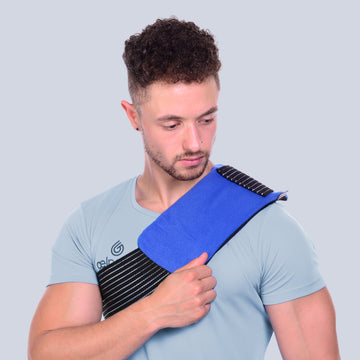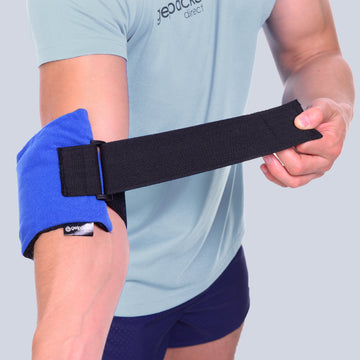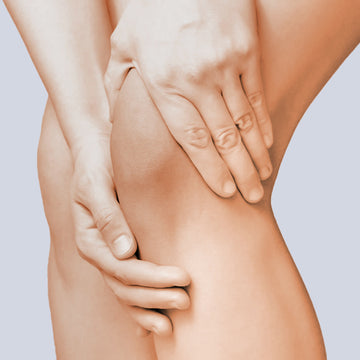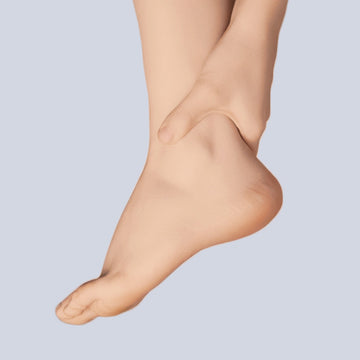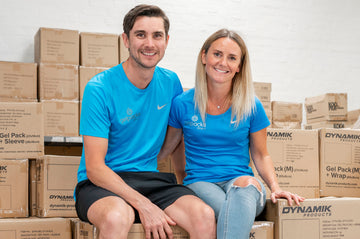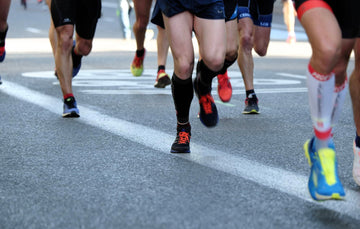Posted by Tia Patel | AUG-19-2020

Remedy, Cure, Recuperation - a guide to post workout recovery
Post-workout recovery is all about repairing, resting and replenishing the energy stores! Giving your time muscles time to rest to avoid overtraining and prevent overuse injuries.
However, there are so many principles it's often difficult to know which ones will work best in your own recovery routine. We’ve brought you the top 7 elements to incorporate into your regime to help you #PushHarder and #RecoverBetter
Cool down
Your cool down marks the transition from running to other post-run activities and can significantly impact your recovery rate. A proper cool down will allow your body to efficiently transition blood from the working muscles to the rest of your body. Bringing your run to a sudden halt can increase the risk of blood pooling, causing a drop in blood pressure leaving you feeling dizzy and disorientated. Stopping on the spot can also put you at risk of injury and other problems. Here is how to cool down after a run:
Step One: Gradually decrease your running pace and slow it down to an easy jog for nothing less than 5 minutes. This will help you bring your heart down to normal, and it’s also a great time to reflect on the run.
Step Two: Walk slowly for three to five minutes while taking deep breaths and scanning your body from head to toe, making sure that everything is okay and back to normal.
Step Three: Have a sip of water and jump into your post-run ritual. For ideas on what to do next, keep on reading………..
Hydration
Sweating is your body's natural response when you run to keep your core temperature in a healthy range. However, sweating also robs your body of fluids and electrolytes that need to be replaced post-run during your recovery.
The human body is 70% water. So, it’s no secret that your body needs water to function! Your body needs water to help move nutrients, electrolytes and almost every other substance required for healthy and optimal functioning. Being dehydrated can actually increase your chances of injury and pain by not providing your body with the correct nutrients it needs.
Dehydration can also hinder the protein synthesis which is the process by which your muscles break down and repair during and after running. Dehydration can lead to a breakdown in muscle tissue undermining your training, performance and level of fitness growth.
It’s important you begin your run well hydrated, regardless of the intensity and length of run, to provide your body with enough nutrients to carry you during and immediately after your run. Try to drink at least 500ml of water 2 hours before your run.
The NHS recommends drinking 1.2 litres of fluid a day to include Water, lower fat milk, sugar-free drinks, tea and coffee. But no two people are the same, and as sweaty runners we recommend monitoring your hydration levels based on the colour of your urine: If your urine color is pale yellow, resembling lemonades, then you’re properly hydrated. If it’s a darker tint of yellow, then you are improperly hydrated, and might need more fluids.
Click here for a recipe to make your own post workout recovery drink
Ice then Heat
When to use ICE?
Ice is used immediately after running to treat any acute injuries. Once an injury occurs, any damaged tissue or muscle must be removed with the body reacting by initiating a three stage repair process. This involves clearing damaged cells, the creation of new cells to form a repair structure and the final stage of giving cells their strength and structure. Swelling from cell damage can slow the repair process which is why ice is used to reduce blood flood, limit swelling, relieve pain and promote healing.
However, it's important to stick to 15-20 minute intervals when icing an injury to avoid damaging any nerves and other tissue.
When to use HEAT?
Heat is recommended two - three days after injury, when all the swelling has gone and the pain is tolerable. Heat therapy works by opening up blood vessels, to increase blood flow to the affected area, bringing oxygen and nutrients needed for repair. Whilst heat is generally used for long-term injuries such as sore joints or lower back pain, it can also be applied before exercise to increase elasticity as part of a warm up routine.
We now recommend trying combination therapy post run. Ice immediately afterwards and then use a heat treatment 2 hours later. Give it a try! We’ve noticed great results, muscles feel less tired and niggles heal quickly.
Our 3-in-1 gel packs are the perfect partner for your post run regime, use hot or cold as many times as you like!
Nutrition
The type and quality of food you ingest just post workout will have a significant impact on your recovery rate. The post run eating window is typically 30-60 minutes after a run. During this time, your body is better primed at absorbing nutrients, using carbohydrates and proteins to restore and repair muscle tissue.
Click here the importance of breakfast for runners
Aim to eat complex carbohydrates to replenish energy stores. The recommendation is 1.5 grams of carbohydrates per pound of body weight from high quality sources including vegetables, whole grains, fruits, bread, pasta, rice and low-fat milk. However, the exact amount depends on your level of fitness, training intensity, training goals and personal preference.
Read our guide to fasted running
Your body also needs quality proteins to provide your body with the building blocks and essential amino acids for the repair process. This includes eggs, lean meat and dairy.
Your body is most efficient at recovering when provided with the correct nutrients so even if you don’t have time for a full meal, you can still get quality nutrients from sports drinks or milk-based shakes - this is often easier on the stomach and more convenient. One of the best recovery shakes is chocolate milk containing a mix of natural sugars and proteins.
Sleep
Sleep is the most underrated recovery tool! The repairing and rebuilding of muscle processes can only take full effect when the body is at rest, sleeping. This means that sleep forms the foundation of recovery and performance. It’s the perfect excuse for a lie in!
Being sleep deprived means that your body is unable to perform at its best during a run. Post-run you’ll feel a lack of energy as your body can’t bounce back in the same way due to a reduction in the production of HGH hormone which promotes cell regeneration and aids with other vital bodily functions.
Sleep deprivation also increases the risk of a range of health issues including heart disease, obesity, impaired immune function, low productivity, and mental disorders.
The exact amount of sleep you need is unique to you! It varies depending on your age, environment, genetics and level of daily activity. As you go through life, it's a fact that you’ll need different amounts of sleep; with your running training cycle also affecting your sleep. However, the best person to decide how much sleep you need is you!
The NHS states that people who sleep seven to eight hours a night are healthier and live longer. Ultimately if you wake up in the morning and still feel tired you probably need more sleep.
Stretching
Runners are prone to tightness in the hips, hamstrings, and calves with tightness taking a toll on performance, affecting recovery and the rate of soreness and tenderness following a workout. Stretching post run allows the lactic acid (a by-product from your muscles when you run) to be flushed out into your bloodstream and removed from your body, to reduce muscle soreness.
The best time to stretch is immediately after a run, when your muscles are warmed up and loose, so the risks of tearing a muscle and injury are reduced.
A proper stretching routine should last between 10 to 20 minutes, holding the stretches from 30 to 60-seconds to release any tension and discomfort by gently breathing into it. Focusing on the main running muscles like the quads and hamstrings, hips, lower back and calves where you feel sore. Stretch the area properly to relieve discomfort, staying within your pain limits.
Check out @thefitwanderluster for advice on strengthening and recovery!
Foam Roll & Massage
Foam rolling takes traditional stretching to the next level!
Foam rolling works by rolling out troubled areas of muscle to straighten out and remove knots and tightness. Releasing these knots isn’t pain free however. In fact foam rolling can be quite a painful and challenging experience. But the benefits of incorporating foam rolling into your recovery, according to the Medicine & Science in Sports & Exercise Journal, include increased tissue repair, enhanced mobility and limited soreness. Thats a win win really!
So the next time you get in from run, give these principles a try so you can recover better, don’t forget to let us know how you get on!
#TeamGPD
https://www.runnersworld.com/beginner/g20821234/7-ways-to-fix-your-postrun-recovery/
https://www.verywellfit.com/post-run-recovery-tips-2910938
https://physioworks.com.au/FAQRetrieve.aspx?ID=44448
https://www.active.com/running/articles/10-tips-to-recover-faster-between-runs
https://www.bbcgoodfood.com/howto/guide/how-recover-after-your-run
https://blog.mapmyrun.com/how-to-recover-faster-between-runs/
https://www.runtastic.com/blog/en/running-recovery-tips/
https://strengthrunning.com/2010/08/running-recovery/
https://www.runnersblueprint.com/recovery-principles-runners/